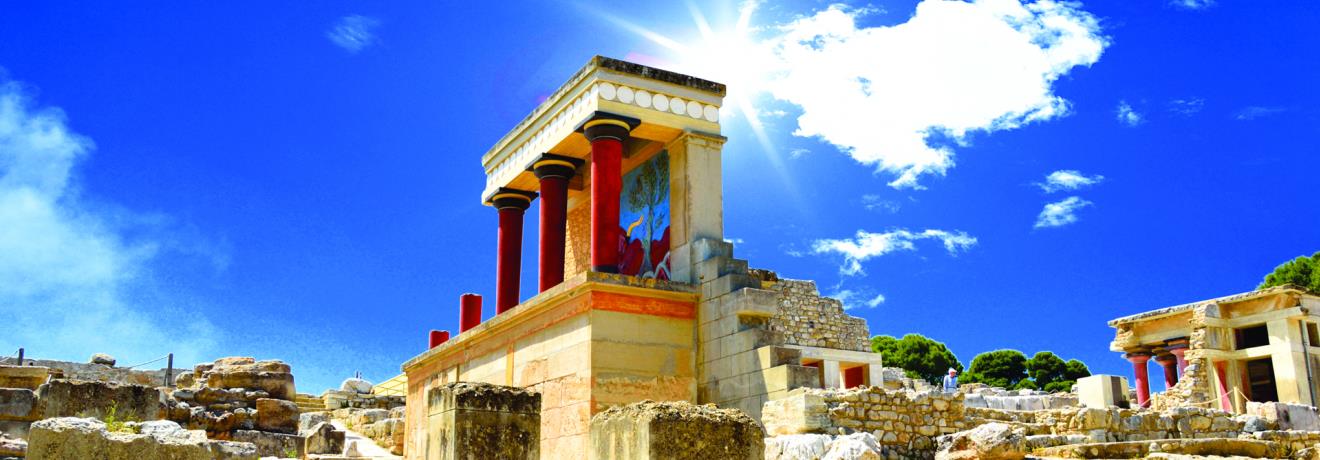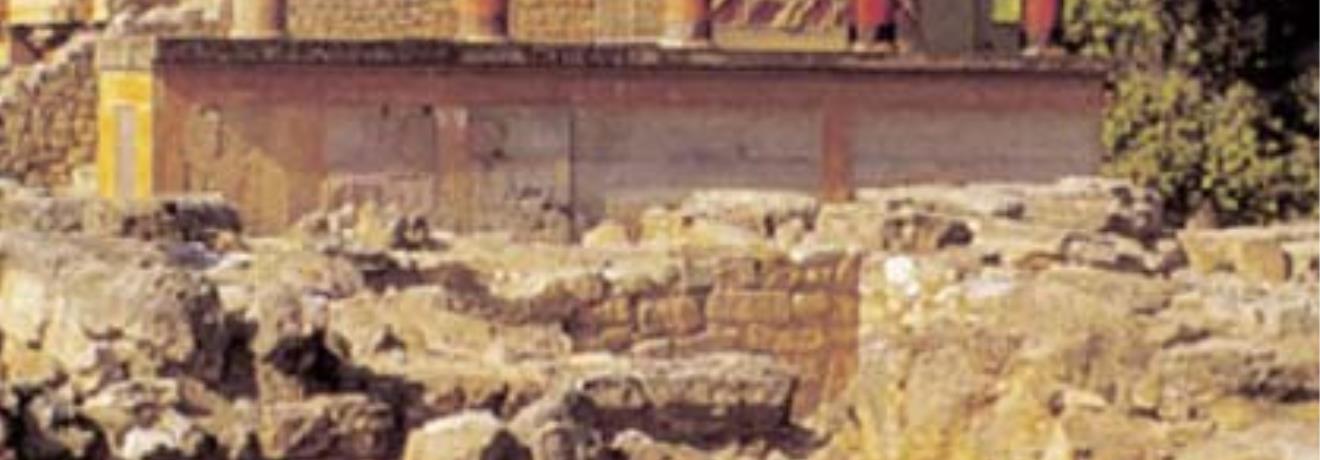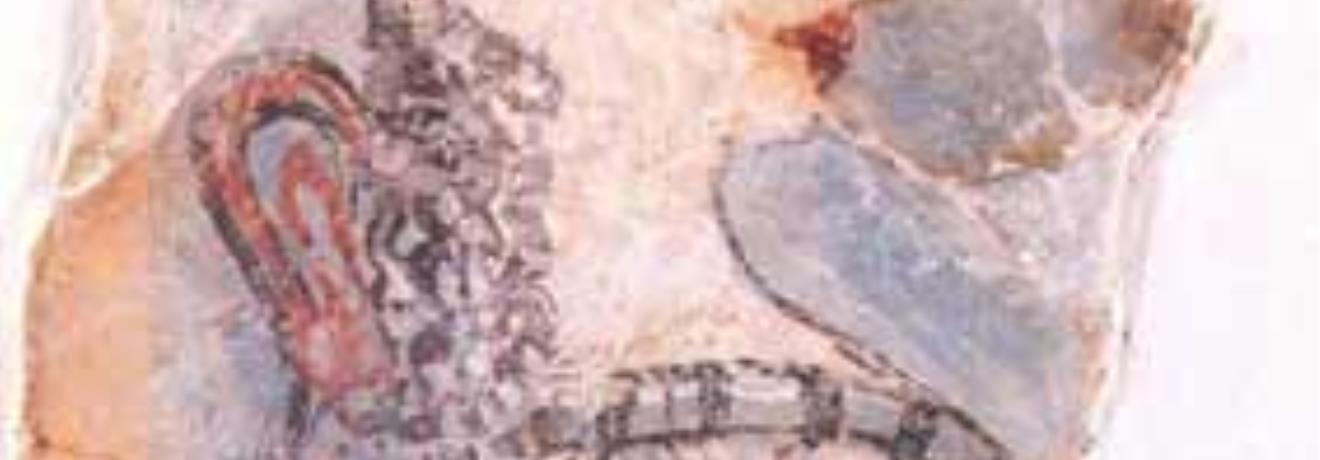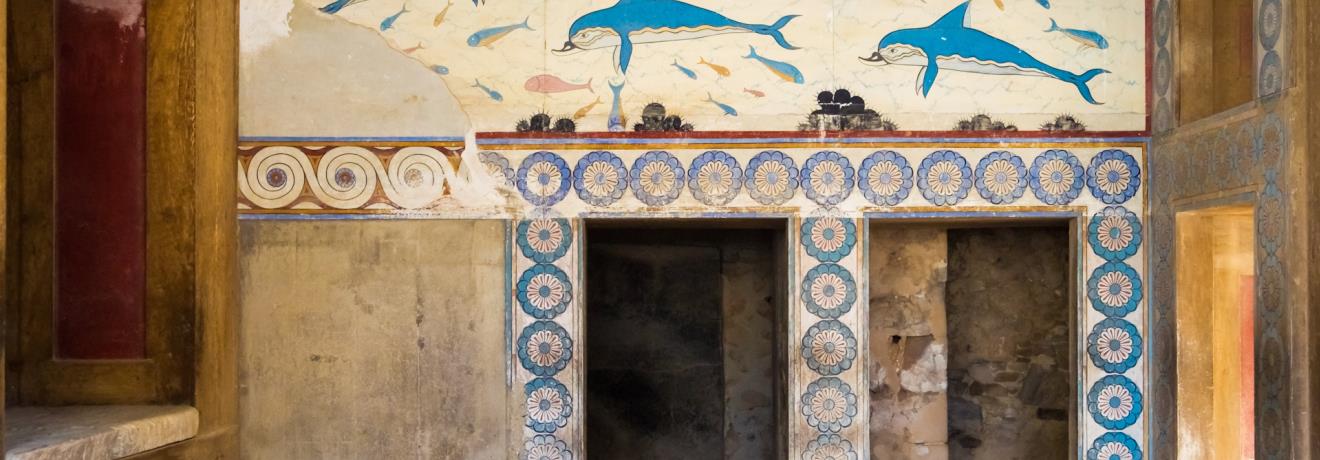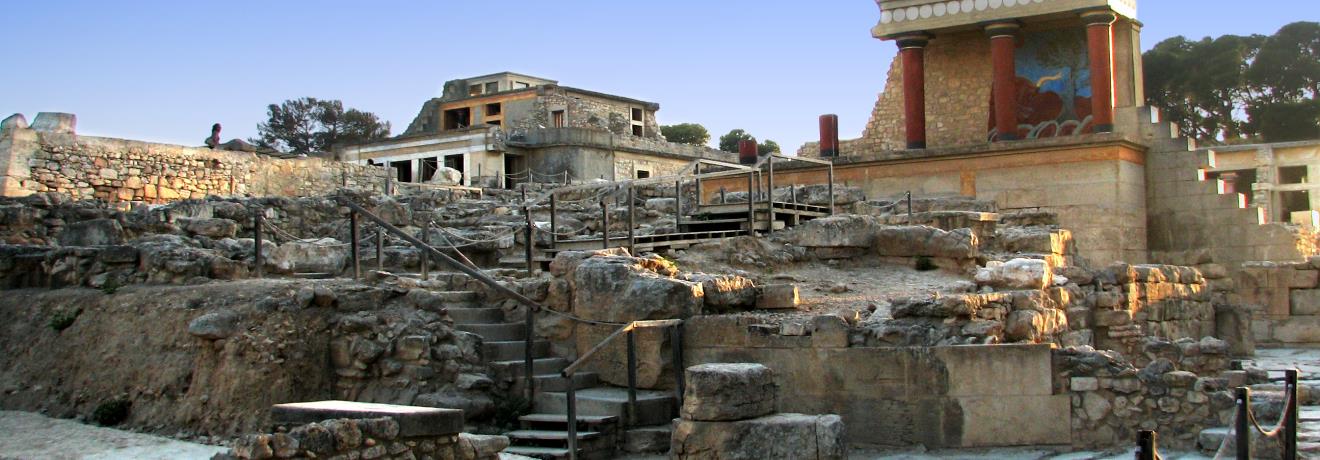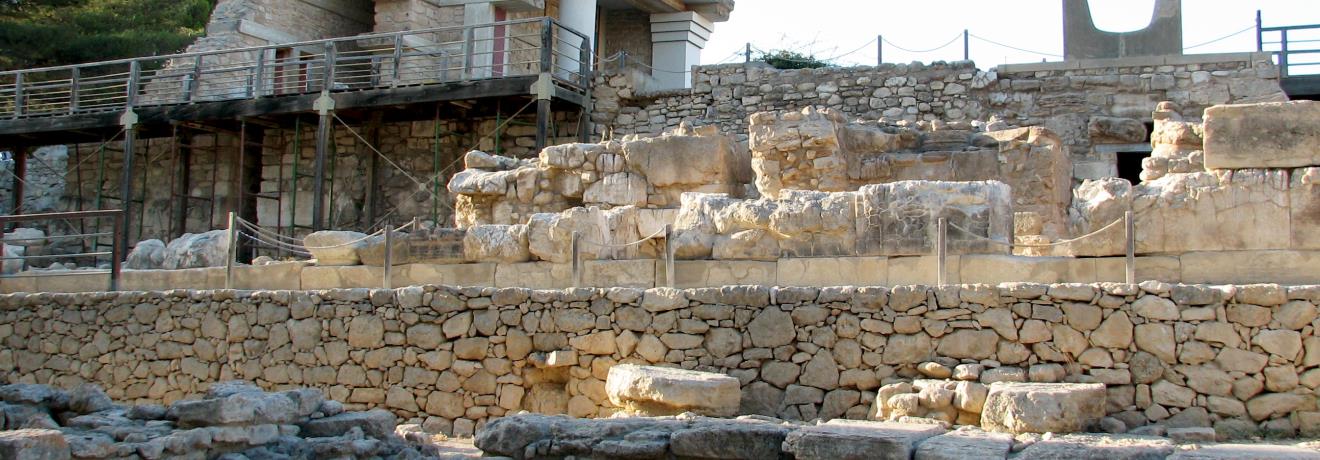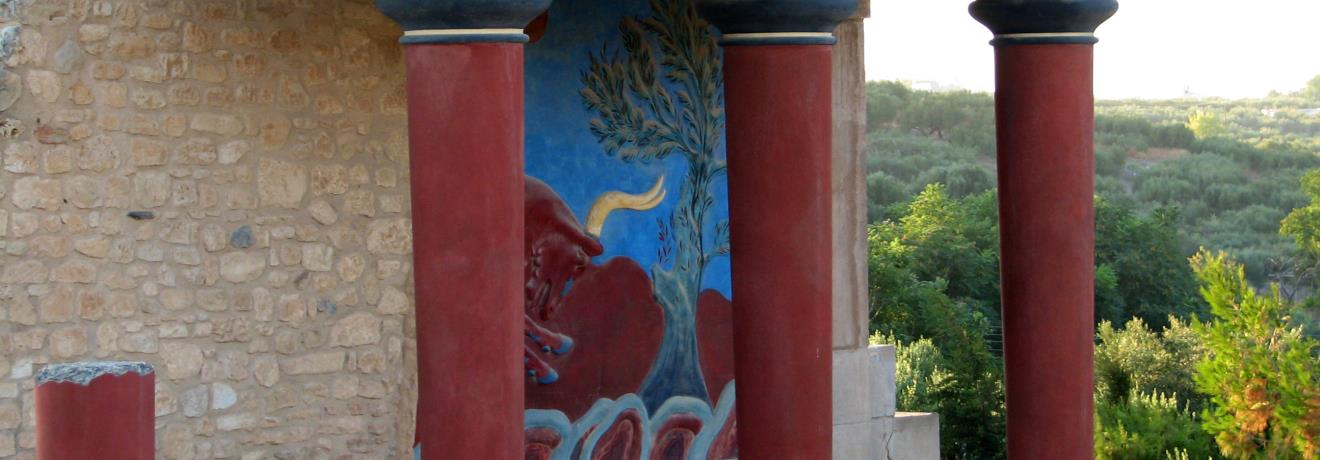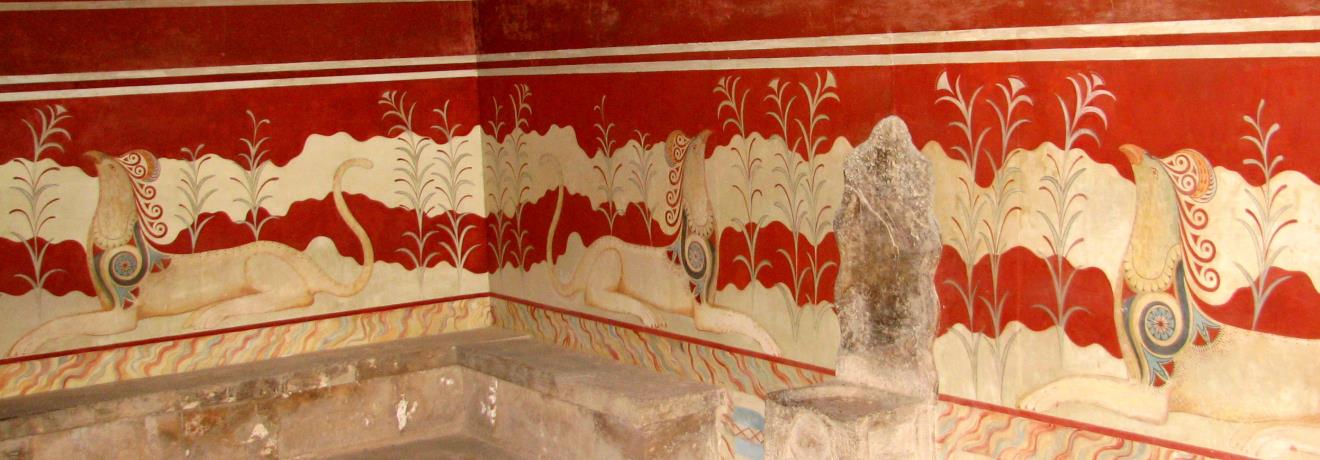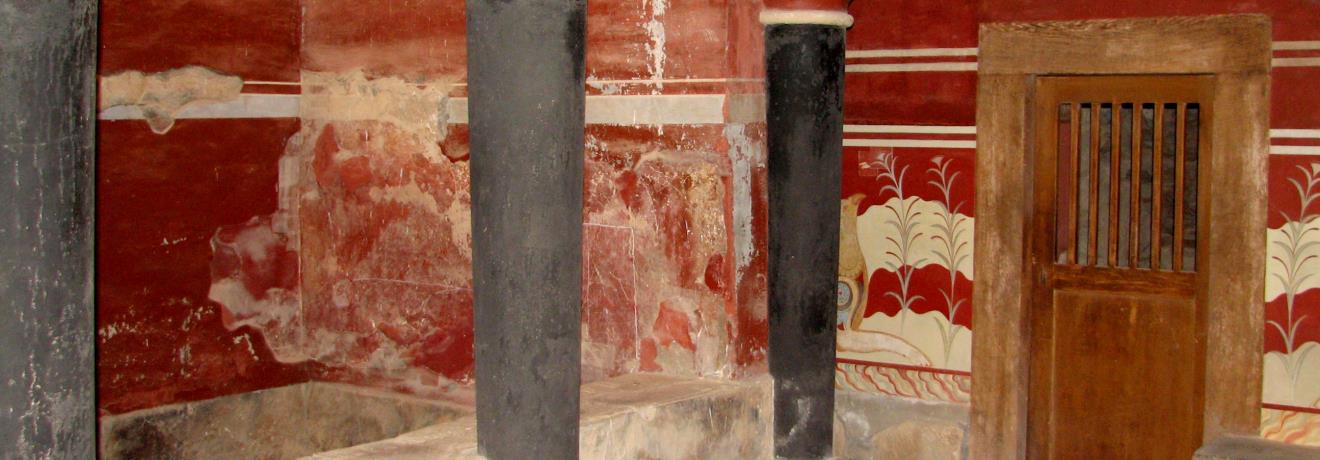Knossos is the heart of the Minoan civilization, according to tradition the seat of the
legendary king Minos and the birthplace of thrilling stories, such as the myths of the Labyrinth with
its Minotaur and of Daidalos and Icaros. The site was inhabited continuously from the Neolithic
period (7000-3000 BC) until the late Antiquity. The first epigraphical testimony derives from the 14th
century BC Linear B tablets, where the city is referred to as Ko-no-so. The Minoan settlement of
Knossos develops especially during the palatial era, which is defined by the periods of the Old
(19th-17th centuries BC) and New Palaces (16th-14th centuries BC) respectively. In the latter period
the Minoan civilization reaches its peak, with a vigour that is reflected at all levels: population growth
and subsequent residential expansion, economic prosperity and social complexity, flourishing of the
material culture with the palatial art reaching its apogee. In 1450 BC the palaces of Crete are destroyed
by causes, for which there is no consensus among researchers. Nevertheless, the fall of the palaces
marks the end of the Minoan civilization. Only the palace of Knossos will survive for a century still, as
the seat of the new rulers of Crete, the Mycenaeans. The city of the historical times left behind scarce
remains, mainly sanctuaries and graves; throughout Greek antiquity, Knossos will survive in the literary
sources, from the time of Homer till the Hellenistic historian Diodorus Sikeliotes, as the glorious kingdom
of the mythical Minos. Knossos flourished again during the Hellenistic period, while in 67 BC the city was
occupied by the Roman consul Quintus Caecilius Metelus Creticus and became a Roman colony. In the
medieval times, a few kilometers northwards of Knossos, would emerge the new capital of the island, the
city of Chandax, namely the contemporary Heraklion.
The location of ancient Knossos was first spotted in 1878 by the Cretan antiquarian and
merchant Minos Kalokairinos.
Arthur Evans
conducted systematic excavations at the site between 1900 and 1931, bringing to light the palace, a
large section of the Minoan city, and its cemeteries. Since then, the site and its wider region have been
excavated by the British School of Archaeology at Athens and the local Archaeological Service. The
restoration of the palace to its present form was carried out by Arthur Evans. Conservation and
consolidation works are carried out by the Archaeological Service of the Ministry of Culture, imposed
by the need to preserve and protect the monuments uncovered.
- THE MONUMENTS OF THE SITE -
The Palace of Knossos
is the largest (it covers an area of 20,000 square metres) and most spectacular of all the Minoan palatial
centres. It has all the typical features of the
architectural type
established in ca. 1700 BC: four wings arranged around a rectangular, central court, oriented N-S, which is
actually the nucleus of the whole complex. The east wing contains the
residential royal quarters,
the workshops and a shrine. The west wing is occupied by the
storerooms with the large pithoi (storage jars),
the shrines, the repositories, the
throne room
and, on the upper floors, the banquet halls.
The
north wing
contains the so-called "Customs House", a lustral basin and the
stone-built theatral area.
The South Propylon is the most imposing building in the south wing. A second, paved courtyard to the west of the palace, equipped with
the "processional ways" (narrow causeways), was probably used for religious ceremonies. The palace had many storeys, it was built of
ashlar blocks and its walls were decorated with splendid
frescoes,
possibly representing
religious ceremonies.
The old (first) palace was built in around 2000 BC but it was completely destroyed by an earthquake in 1700 BC.
The
new (second) palace,
more complex in plan, strongly resembling a labyrinth, was constructed immediately afterwards. In the middle of the 15th century BC the
Achaeans from the Greek Mainland conquered the island of Crete and settled at the palace of Knossos. They used the Greek language,
as is indicated by the clay tablets they left us behind, written in the Linear B script. The palace was again destroyed by fire in the mid-14th
century BC (LM IIIA period) and Knossos ceased to function as a palatial centre.
The Little Palace
lies to the west of the main palace and has all the features of palatial architecture: scraped wall masonry, reception rooms,
a peristyle hall, a double megaron with polythyra (pier-and-door partitions) and a lustral basin-shrine. Dated to the 17th-15th
centuries BC.
The Royal Villa
lies to the NE of the palace and its architectural form is distinguished by the polythyra, the pillar crypt and the double staircase,
with two flights of stairs. It is strongly religious in character and might have been the residence of an aristocrat or a high priest.
Dated to the 14th century BC.
The House of the Frescoes is located to the NW of the palace and is a small urban mansion with rich
wall- painting decoration. Dated to the
15th-12th centuries BC.
The Caravan-serai lies to the south of the palace and was interpreted as a reception hall and hospice. Some
of the rooms are equipped with baths and decorated with
wall paintings.
The "Unexplored Mansion"
was a private building, probably of industrial function, to the NW of the palace. It is rectangular, with a central, four-pillared hall,
corridors, storerooms and remains of a staircase. Dated to the 14th-12th centuries BC.
The Royal Temple-Tomb
is located almost 600 m to the south of the palace. It seems that one of the last kings of Knossos (17th-14th centuries BC) was buried
here. Typical features of its architecture are the hypostyle, two-pillar crypt, the entrance with the courtyard, the portico and a small
anteroom. By a paved path it was connected with the so-called "House of the High Priest", which comprised a stone altar with two
columns, framed by the bases of double axes.
The Villa of Dionysos. Private, peristyle house of the Roman period. It is decorated with splendid
mosaics by Apollinarius, depicting Dionysos. The house contains
special rooms employed for the Dionysiac cult. Dated to the 2nd century AD.
